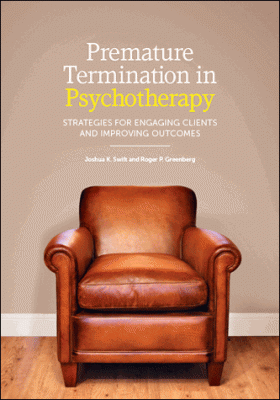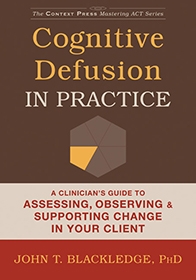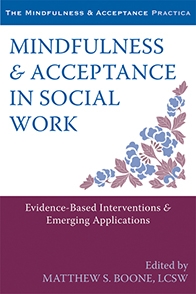Jul 17, 2015 | Book Reviews
 Premature Termination in Psychotherapy is an accessible resource for novice and experienced counselors alike who are interested in learning potential causes for and strategies to prevent premature client termination. This text does a wonderful job creating a foundation supported by research, while providing examples and vignettes to bring that research out of the theoretical and into practical application. The book is structured in three sections that build on each other to offer the reader a sequence that is easily understood. The first section focuses on understanding premature termination in psychotherapy, the second section includes strategies for reducing premature termination, and the final section suggests areas for further study.
Premature Termination in Psychotherapy is an accessible resource for novice and experienced counselors alike who are interested in learning potential causes for and strategies to prevent premature client termination. This text does a wonderful job creating a foundation supported by research, while providing examples and vignettes to bring that research out of the theoretical and into practical application. The book is structured in three sections that build on each other to offer the reader a sequence that is easily understood. The first section focuses on understanding premature termination in psychotherapy, the second section includes strategies for reducing premature termination, and the final section suggests areas for further study.
Part one includes the first two chapters of the book and clearly outlines the challenges for clients, clinicians and organizations that result from premature termination. The first chapter describes the problematic effects of having multiple operational definitions for client dropout and presents evidence on which definitions are empirically reliable. In the same section, Swift and Greenberg list the pros and cons for each operationalization, and with research present their recommendation for the most reliable operational definition. The authors take an extensive look at the definitions used to describe dropout through an examination of multiple studies, ensuring that the reader grasps the discrepancies in the field and has a frame of reference for the remainder of the book. Once the definitions are flushed out, this section addresses the most common reasons for dropout as supported by research.
The second chapter includes the bulk of the empirical justification for the text. This chapter might be daunting for clinicians or students who are not familiar with complex statistical models. Swift and Greenberg explain the previous studies associated with dropout, and stress the importance of an operationalized definition for continuity of research. The authors completed their own meta-analysis in 2012 on premature client termination, examining which clients were terminating most frequently, what type of clinician they were seeing, and what setting termination was occurring in. The chapter allows the reader to make an informed decision on the most relevant strategies for his or her clientele. The incorporation of a large-scale meta-analysis conducted by the authors increases the strength of the recommendations provided later in the text.
Part two includes chapters 3 through 10 and examines strategies for reducing premature termination. The chapters are consistently well structured and make the material accessible, especially given the multifaceted subject matter. Each chapter begins with a definition and description of the terms; then Swift and Greenberg present the empirical research supporting the strategy they are introducing, and next they describe how to put the strategy into practice. Each chapter ends with two clinical examples in the form of vignettes. The chapters include strategies for instilling hope, building the therapeutic relationship and incorporating client preferences into treatment, among others. These strategies are useful for novice and experienced clinicians alike and are all well grounded in research. The consistency in the text’s structure makes it easy for the reader to navigate and reference specific aspects of a chapter if necessary.
The final section of the book includes the conclusion and recommendations for future research. In this chapter the authors reiterate the important information presented in each of the previous chapters, including a short synopsis of each of the eight strategies presented. I found it especially useful to be able to see the strategies listed together; this arrangement allows the reader to focus on the part of the book that is directly applicable to clinical practice. Swift and Greenberg end with recommendations for further research, which support the notion that there is still more to be done.
Premature client termination is a problem for both beginning and experienced clinicians. The objective of this book is to offer an understanding of why it happens and when it happens most frequently, as well as provide strategies supported by empirical data that meaningfully reduce the incidence of premature termination. This objective is certainly attained in a clear, concise and empirically supported style that is for the most part accessible to any level of counselor.
Swift, J. K., & Greenberg, R. P. (2014). Premature termination in psychotherapy: Strategies for engaging clients and improving outcomes. Washington, DC: American Psychological Association.
Reviewed by: Charmayne R. Adams, graduate student, Wake Forest University, Winston-Salem, NC.
The Professional Counselor
https://tpcjournal.nbcc.org/
Jul 17, 2015 | Book Reviews
 Counseling is as much an art as it is a science. Effective practitioners continuously evaluate their approach to providing ethical and efficacious mental health care. Moreover, effectual practitioners keep abreast of current trends and promising evidenced-based practices to inform their own approach to working with clients. After reviewing this volume, it became clear to me that the author is motivated to continuously improve his work with clients in the tradition of the wise artisan. In this book, John T. Blackledge adds to the literature by sharing his expertise with a useful and accessible clinician’s guide that incorporates cognitive defusion, a way of thinking about thoughts in acceptance and commitment therapy (ACT), into mindfulness-based therapies, as well as a variety of other types of counseling. The chapters are arranged in a thoughtful fashion such that cognitive defusion is defined in chapter 1, and in chapters 1 through 4, the author describes the usefulness of cognitive defusion for different contexts. In chapters 5 through 10, the author provides a detailed description of how to incorporate cognitive defusion in therapy sessions with clients.
Counseling is as much an art as it is a science. Effective practitioners continuously evaluate their approach to providing ethical and efficacious mental health care. Moreover, effectual practitioners keep abreast of current trends and promising evidenced-based practices to inform their own approach to working with clients. After reviewing this volume, it became clear to me that the author is motivated to continuously improve his work with clients in the tradition of the wise artisan. In this book, John T. Blackledge adds to the literature by sharing his expertise with a useful and accessible clinician’s guide that incorporates cognitive defusion, a way of thinking about thoughts in acceptance and commitment therapy (ACT), into mindfulness-based therapies, as well as a variety of other types of counseling. The chapters are arranged in a thoughtful fashion such that cognitive defusion is defined in chapter 1, and in chapters 1 through 4, the author describes the usefulness of cognitive defusion for different contexts. In chapters 5 through 10, the author provides a detailed description of how to incorporate cognitive defusion in therapy sessions with clients.
The book has many strengths. For example, in Chapter 1 the author describes the history of cognitive defusion and situates the construct in terms of its Buddhist origin. In addition, he describes cognitive defusion’s usefulness in mindfulness-based therapies. Dr. Blackledge also discusses how thoughts can have tremendous influence over a client’s feeling state, with the client’s emotions being fused to those thoughts. The author then introduces techniques that are designed to defuse the client’s emotions from the thoughts, which ultimately lessens client emotional discomfort and leads to positive and measurable therapeutic change.
The author’s central premise—that thoughts in the form of words may not be able to capture the richness of in-the-moment experience—may liberate clients struggling with irrational thinking or cognitive distortions such as negative self-evaluations. The author states that thoughts are not necessarily holistically accurate. One cognitive defusion technique the author describes is teaching the client to conduct a nonjudgmental review of the negative self-talk, as a bystander, which allows the client to defuse from these negative self-evaluations, lessening emotional distress. The author discusses the similarities and differences between these cognitive constructs and techniques and those of Cognitive Behavioral Therapy (CBT). Specifically, CBT posits that thinking changes emotions (i.e., cognitive restructuring), whereas cognitive defusion posits that words and thoughts do not necessarily hold power over emotional change. The author discusses the movement in metacognitive therapy, which emphasizes thinking about and relating to thoughts in different ways. He points out that the change element in metacognitive therapy is for the client to learn to tolerate or sit with problematic thoughts, a construct well researched in dialectical behavior therapy. Another strength of this text is that the author includes many therapist–client dialogues, in the form of transcripts, to allow the reader to see how the author introduces and incorporates the various techniques into therapy sessions with clients.
In addition to its strengths, the book has a couple of limitations. The author provides an excellent review of the literature regarding empirical support for cognitive defusion as a therapeutic technique. I would have preferred this section be introduced earlier in the book, perhaps after the first two chapters. Scholars tend to want to critically review the research and support for the proposed model of therapy prior to delving into the suggested method of applying the model (i.e., the clinician’s guide portion). Additionally, a graphical representation of the different views of thinking in the various therapeutic models (e.g., CBT, ACT) would have facilitated an easier comparison of the important differences.
The author has provided a helpful guide for clinicians at all levels of expertise to learn about and integrate cognitive defusion techniques into their therapeutic practice. Experts have predicted movement toward mindfulness-based therapies in the 21st century, which makes this text a particularly timely and valuable contribution. I recommend this clinician’s guide for any therapist or counselor interested in mindfulness-based counseling.
Blackledge, J. T. (2015). Cognitive defusion in practice: A clinician’s guide to assessing, observing, & supporting change in your client. Oakland, CA: New Harbinger.
Reviewed by: Donald “Rick” Froyd, Jr., NCC, University of Phoenix, Tempe, AZ.
The Professional Counselor
https://tpcjournal.nbcc.org/
Jul 17, 2015 | Book Reviews

Counseling Psychology is a third-edition textbook by Charles J. Gelso, Elizabeth Nutt Williams and Bruce R. Fretz that surveys the field of counseling psychology, emphasizing the blending of the rich traditions of research, clinical practice and theory for which the field is known. As the authors note in their preface, some have “confused counseling, the activity, with counseling psychology, the profession” (Gelso, Nutt Williams, & Fretz, 2014, p. xiii), essentially overlooking counseling psychology’s emphasis on an empirical psychology scientist–practitioner base, a broad range of activities, and unique training and career paths. The authors are prominent counseling psychologists themselves, and continue to elucidate how counseling is related to and part of the many professional activities present in the field of counseling psychology.
What is counseling psychology? Counseling psychology can be defined by the profession’s focus on the scientist–practitioner model, blending what we learn via research and applying it to clinical practice (and vice versa) and incorporating what we know about how people develop and change within their cultural and environmental frameworks. Central values include an emphasis on utilizing people’s strengths and helping them move toward optimal functioning, enhancing life-span development and vocational growth, advocating for social justice and cultivating multicultural awareness, incorporating brief preventive interventions when appropriate, and embracing a scientist–practitioner professional identity and set of skills. Counseling psychologists utilize these values in their work as psychotherapists, researchers, clinical supervisors, educators, consultants, administrators and so forth. Therefore, counseling psychologists are trained as counselors and psychotherapists as well as competent researchers, and their science-based skills and values can be used in myriad roles.
Counseling Psychology provides an overview of this professional field. Part I examines counseling psychology as a profession, focusing on its central values, ethics and history, and explaining how the field overlaps with other fields both within and apart from psychology. Part II expands on the empirical base of the field, with chapters that provide detail on topics such as research methods, vocational theory and research, diversity and social justice, positive psychology, and the process and outcome research that supports the work of counselors and psychotherapists. Part III provides thorough coverage of the practice of counseling psychology. The therapeutic relationship, psychological assessment, major theories of psychotherapy, career theories and interventions, and group and other systems theories and interventions are presented. Part IV provides readers with more information about how they may pursue a career in counseling psychology, with emphasis on graduate school training, job settings and work activities.
Counseling Psychology provides a balance of breadth and depth in the topics covered, successfully presenting readers with a wonderful overview of the field that is appropriately complex and sophisticated. Similar to its previous editions, it also is the only identifiable book written solely about the profession of counseling psychology, as opposed to the numerous books written about parts of the field (e.g., counseling, psychotherapy). These reasons likely contribute to why the text is on the required study reading list in some counseling psychology doctoral graduate programs in preparing doctoral candidates for their comprehensive examinations. The authors discuss multifaceted concepts, dynamics and professional challenges in a clear and concise yet thorough style. However, one weakness of the text is that it cannot provide the same amount of depth as a text that focuses on just one of these many areas (e.g., vocational psychology, research methodology, theories of counseling and psychotherapy). Clearly, a text on theories of counseling and psychotherapy can devote much more space and attention to such a topic.
In conclusion, Counseling Psychology is a highly recommended read. The book is suitable for undergraduate college students in upper level courses, counseling and counseling psychology graduate students, professionals in fields such as counseling and psychology, and anyone who desires to learn more about this rewarding, complex and important professional field.
Gelso, C. J., Williams, E. N., & Fretz, B. R. (2014). Counseling psychology (3rd ed.). Washington, DC: American Psychological Association.
Reviewed by: Courtney E. Gasser, NCC, University of Baltimore, Baltimore, MD.
The Professional Counselor
https://tpcjournal.nbcc.org/
Jul 14, 2015 | Book Reviews
 Mindfulness and Acceptance in Social Work: Evidence-Based Interventions and Emerging Applications is a thorough primer for mental health practitioners interested in adopting a more holistic approach to serving their clients while increasing their own self-awareness and growth across the life span. The editor has compiled and coauthored thoughtful essays on a variety of modalities, from behavioral activation to acceptance and commitment therapy, dialectical behavioral therapy to mindfulness-based stress reduction. The evidence-based interventions and emerging applications address the ongoing development of cultural competence, best practices for at-risk children’s groups, and self-regulatory practices that enhance one’s healing presence. Social workers, counselors and therapists who have searched for a deeply humanistic way to apply cognitive interventions will find inspiration in these pages.
Mindfulness and Acceptance in Social Work: Evidence-Based Interventions and Emerging Applications is a thorough primer for mental health practitioners interested in adopting a more holistic approach to serving their clients while increasing their own self-awareness and growth across the life span. The editor has compiled and coauthored thoughtful essays on a variety of modalities, from behavioral activation to acceptance and commitment therapy, dialectical behavioral therapy to mindfulness-based stress reduction. The evidence-based interventions and emerging applications address the ongoing development of cultural competence, best practices for at-risk children’s groups, and self-regulatory practices that enhance one’s healing presence. Social workers, counselors and therapists who have searched for a deeply humanistic way to apply cognitive interventions will find inspiration in these pages.
Of particular interest to the more spiritually oriented reader will be the exploration of Zen roots in mindfulness practices and how functional contextualism takes on deeper meaning when we consider our shared interdependence. Expanding on our understanding of person-in-environment, an Eastern framework for person-as-environment bridges modern social work with ancient practices for the reduction of suffering, both in oneself and others. Those invested in working toward global well-being will be reignited with encouragement for the ways in which one individual’s healing and expanding realizations can spark necessary changes at the micro, mezzo and macro levels.
The variety of approaches reviewed helpfully represents the “technical eclecticism” required to effectively serve a broad array of clients from a mindfulness perspective, while allowing humanistic practitioners to stay firmly rooted in their theoretical center. The modalities discussed integrate differing levels of emphasis on thought, feeling and behavior, giving the practitioner beginning assessment and treatment tools to adjust for clients’ more evident processing pathways and efforts at wellness. Those who need more concrete structure are likely to respond to behavioral activation or dialectical behavioral therapy, while those who benefit more from insight-oriented, moment-to-moment self-regulation practices may respond more to acceptance and commitment therapy, or mindfulness-based stress reduction.
Since Mindfulness and Acceptance in Social Work is a primer, it does not address the amount of time and training that are necessary to become proficient in facilitating any of these approaches with any given population or clinical concern. Mental health practitioners committed to ethical practice would be wise to seek out training and supervision to develop adequate skills to serve a broad spectrum of clients, and particularly those with the most need. This primer focuses primarily on the needs of individual young to middle-aged adult clients, rather than families, couples, children, the elderly or many types of groups; practitioners serving multiple clients together, or clients not of middle adulthood, may wish to further research articles addressing their client populations and the best use of mindfulness practices for them. Knowing how to apply mindfulness and acceptance in crisis management requires further training and supervision.
Professional counselors who work in community-based agencies, public health clinics, field-based settings and private practices may all find a thread to follow from Mindfulness and Acceptance in Social Work: Evidence-Based Interventions and Emerging Applications. The authors have written from each of these work experiences, addressing respectful integration of the mindfulness tradition into their modern social work. Given the movement that mindfulness has seen in these managed care settings, there is likely to be increasing evidence for its application with a wider variety of clients across the life span and from around the world in the coming years. For the counselors who wish to be a part of that movement, Mindfulness and Acceptance in Social Work: Evidence-Based Interventions and Emerging Applications is a well-written springboard from which to launch.
Boone, M. S. (Ed.). (2014). Mindfulness and acceptance in social work: Evidence-Based interventions and emerging applications. Oakland, CA: New Harbinger.
Reviewed by: Karen Roller, Palo Alto University, Palo Alto, CA.
The Professional Counselor
https://tpcjournal.nbcc.org/
 Premature Termination in Psychotherapy is an accessible resource for novice and experienced counselors alike who are interested in learning potential causes for and strategies to prevent premature client termination. This text does a wonderful job creating a foundation supported by research, while providing examples and vignettes to bring that research out of the theoretical and into practical application. The book is structured in three sections that build on each other to offer the reader a sequence that is easily understood. The first section focuses on understanding premature termination in psychotherapy, the second section includes strategies for reducing premature termination, and the final section suggests areas for further study.
Premature Termination in Psychotherapy is an accessible resource for novice and experienced counselors alike who are interested in learning potential causes for and strategies to prevent premature client termination. This text does a wonderful job creating a foundation supported by research, while providing examples and vignettes to bring that research out of the theoretical and into practical application. The book is structured in three sections that build on each other to offer the reader a sequence that is easily understood. The first section focuses on understanding premature termination in psychotherapy, the second section includes strategies for reducing premature termination, and the final section suggests areas for further study.


